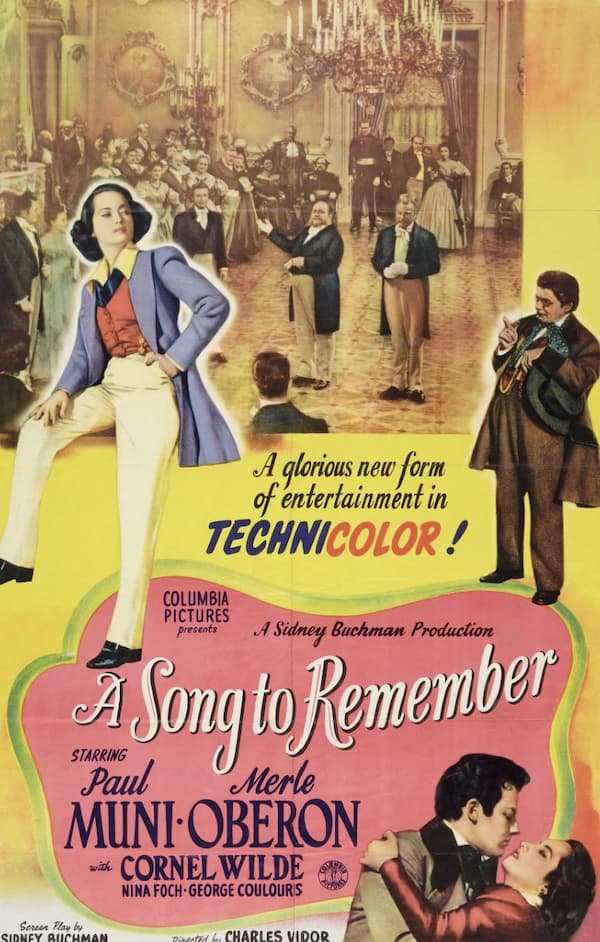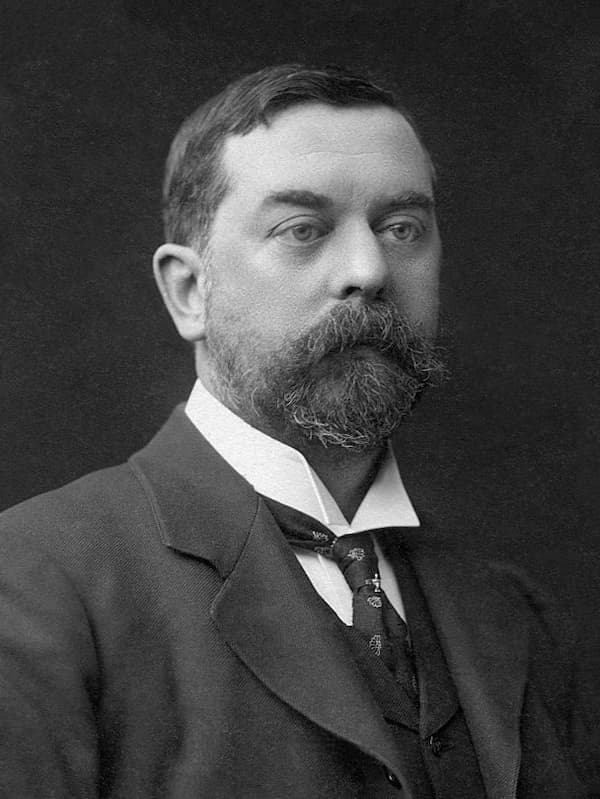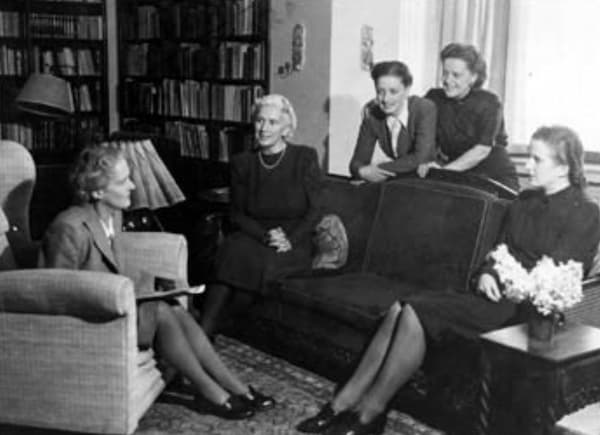In his ground-breaking pre-Surrealist drawings, the French illustrator Grandville (born Jean Ignace Isidore Gerard) (1803–1847) created worlds of anthropomorphic vegetables and zoomorphic figures that would influence artists up through the 20th century.
His 1843 book Un autre monde (Another World), was not successful, but for music lovers, one particular chapter stands out.
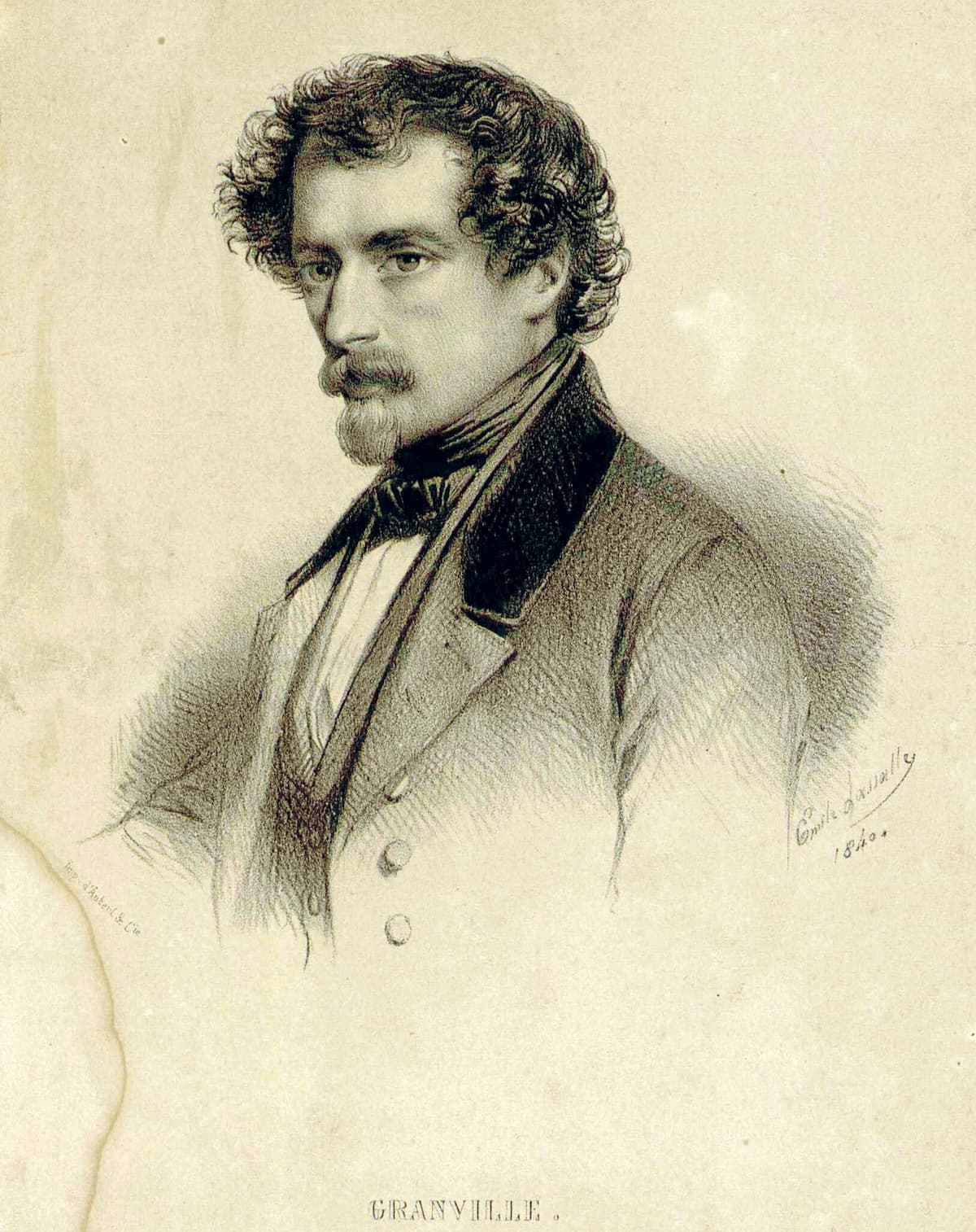
Émile Lassalle: Grandville, 1841.
In Un autre monde, Dr Puff, a down-on-his-luck con man, finds a dozen cast-iron musicians. He recognizes them immediately as the most modern of inventions: a steam orchestra. He decides to hold a concert with the following programme:
| Concert méchanico-métronomique Instrumental, vocal et phénoménal | Concert mechanico-metronomic Instrumental, vocal and Phenomenal |
| Premiere Station | First Station |
| Ouverture à grand orchestra tirée de l’opéra les Rails-Notes | Full orchestral overture from the opera les Rails-Notes |
| L’Explosion, mélodie pour 200 trombones | The Explosion, melody for 200 trombones |
| Rive gauche et Rive droite, grand diurne exécuté par Mlle Tender et M. Tunnel | Left Bank and Right Bank, grand diurne performed by Mlle Tender and M. Tunnel |
| Chanson à boire, par Mlle ***, âgée de 22 mois, 6 jours et une nuit. | Drinking song, by Miss ***, aged 22 months, 6 days and a night. |
| Deuxieme Station | Second Station |
| Le Moi et le Non-Moi, symphonie philosophique en ut. | The Me and the Non-Me, philosophical symphony in C. |
| Les wagons sautés per eux-memes, polonaise pour 300 ophicléides | The wagons jumped by themselves, Polonaise for 300 ophicleides |
| La Locomotive, symphonie à basse pression, de la force de trois cents chevaux, avec mélologue | The Locomotive, low-pressure symphony, three hundred horsepower, with melologist |
| Choeur final | Final Chorus |
| Le frein sera tenu par le Dr Puff | The brake will be held by Dr. Puff |
The programme goes on to say that children under the age of 4 who have begun to smoke, dream and compose will be charged full price. The musicians are guaranteed as non-explosive. The first half of the concert will be in C major and the second half in B flat minor (ignoring the fact that the first work on the second part is specified to be in C). In closing, Dr Puff indicates that the concert is being given in benefit of an anti-millionaire who lives on the moon.
To advertise his concert, Dr Puff put out a poster illustrating the second piece on the first half: the mélodie pour 200 trombones called The Explosion.
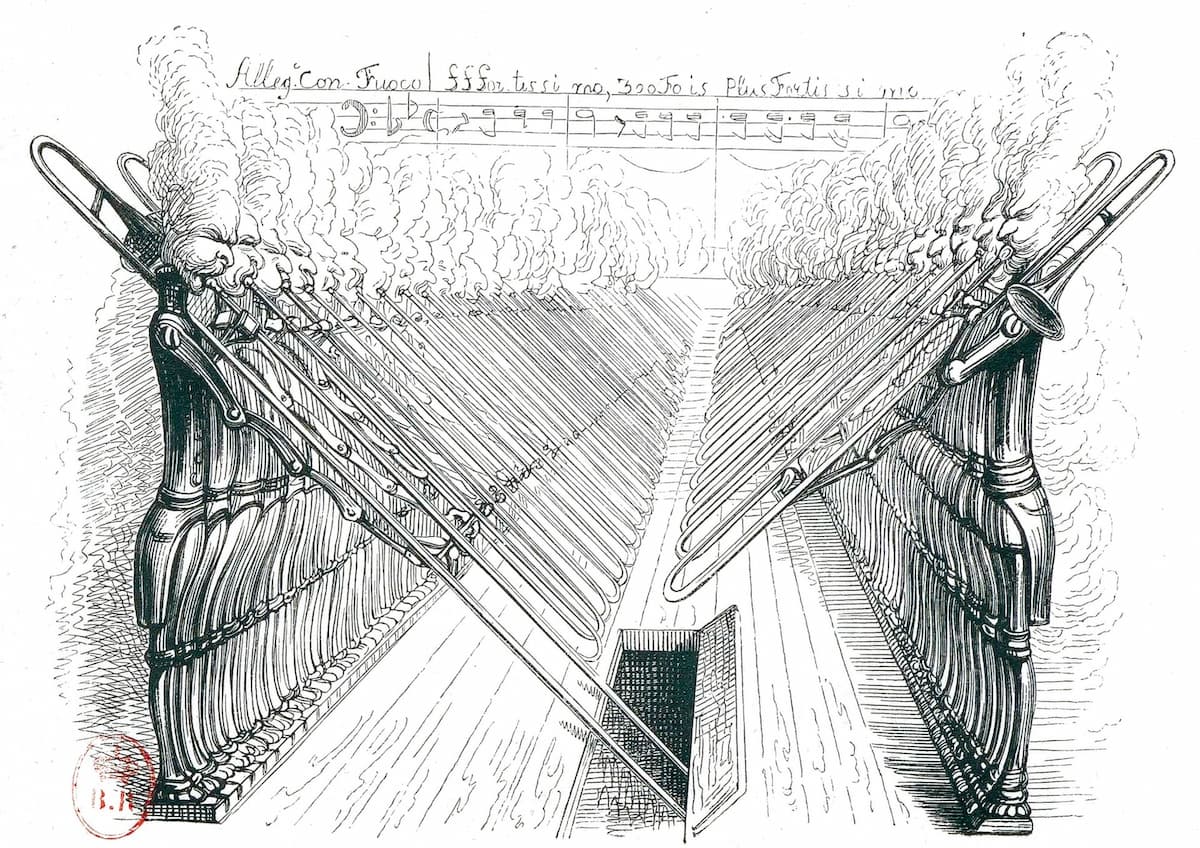
Grandville: Mélodie pour 200 trombones, 1843
Another illustration shows the ‘diurne’, presumably a contrast with a ‘nocturne’, so a piece for daytime, as performed by Miss Tender, singer, and M. Tunnel, trumpeter. Between them is a figure playing a multitude of percussion instruments, including cymbals and a bass drum, with a set of pan pipes on the top.
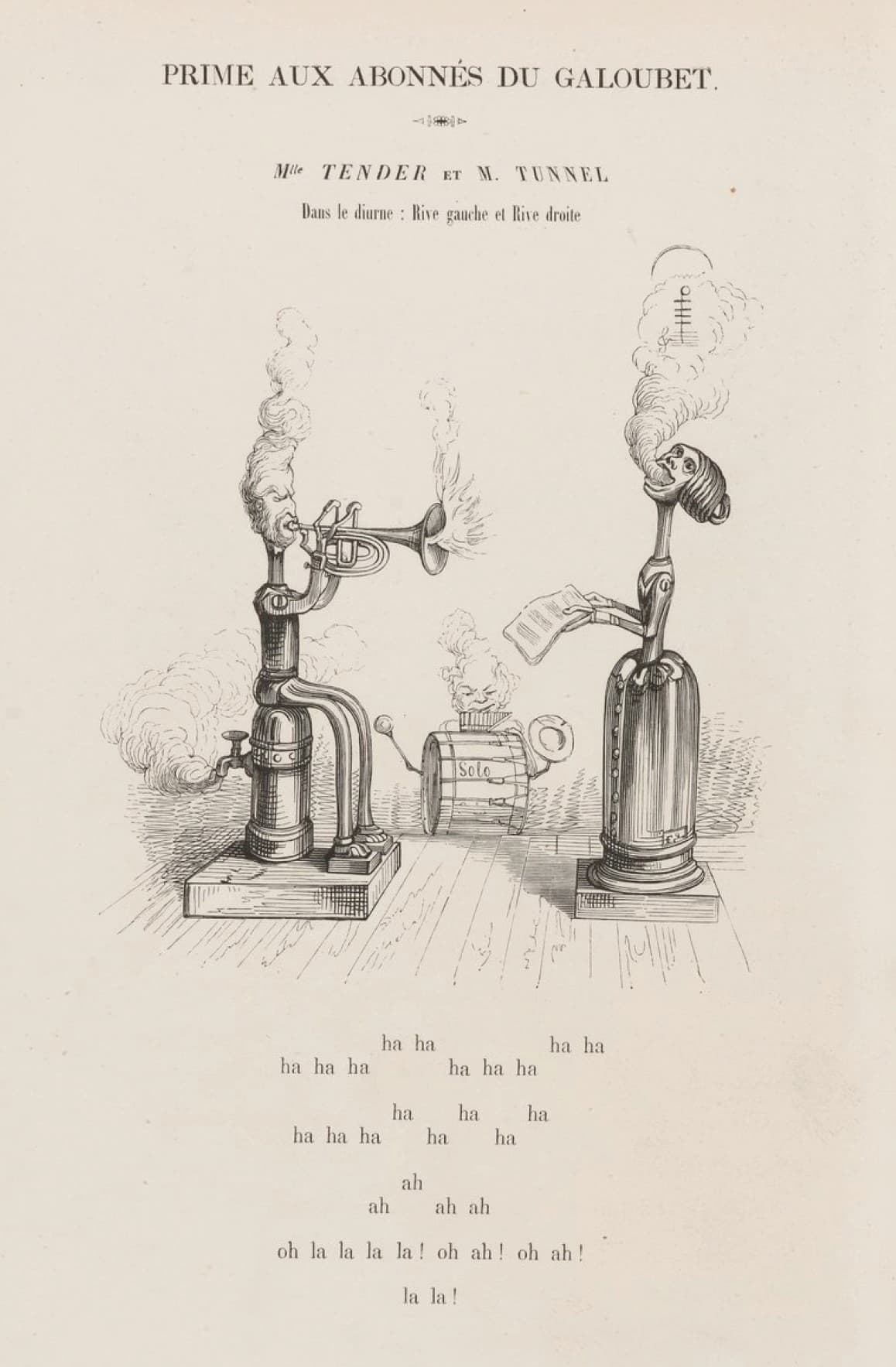
Grandville: Mlle Tender et M. Tunnel, dans le diurne: Rive gauche et Rive droite, 1843
The drinking song, performed by Miss *** aged 22 months, is played on the most French of instruments, the harp.
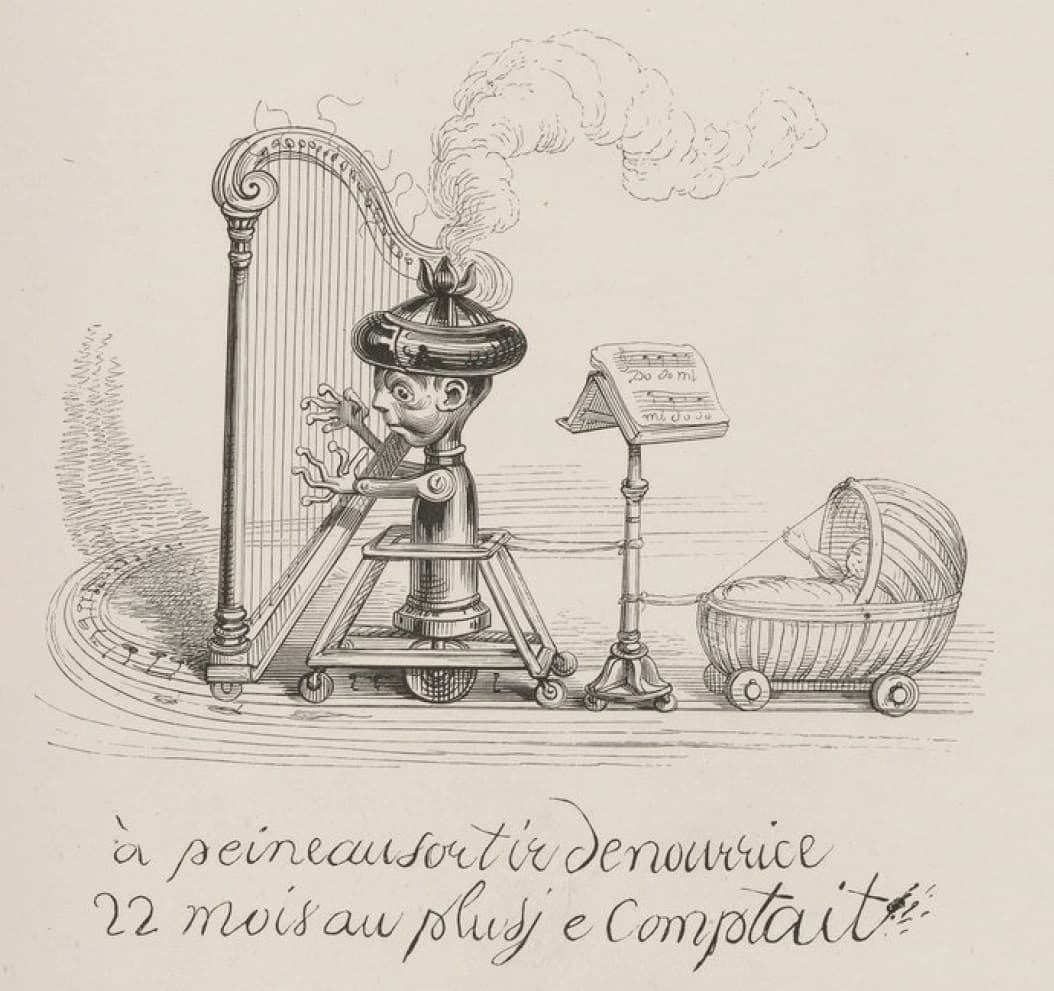
Grandville: The 22-month-old performer, 1843
The composer of Le Moi et le Non-Moi is another of the recurring characters in Un autre monde, the former choirmaster and unsuccessful composer Hahblle. Le Moi et le Non-Moi was his major symphonic work and seems to be a hint of the kind of work that Satie would be creating a few years later. Hahblle’s desire was ‘to revolutionize the musical scale by recognizing the philosophical importance of the note of sol (G)’.
Erik Satie: Les 3 valses distinguées du précieux dégoûté (Klára Körmendi, piano)
Driving the instruments with steam picked up on a 19th-century phenomenon. The only instrument today that is steam-driven is the calliope, which is, essentially, a large set of very loud tuned whistles that are activated by sending steam (and now compressed air) through the pipes with a keyboard. There was also a ‘steam trumpet’, which is now better known through its use as a train whistle.
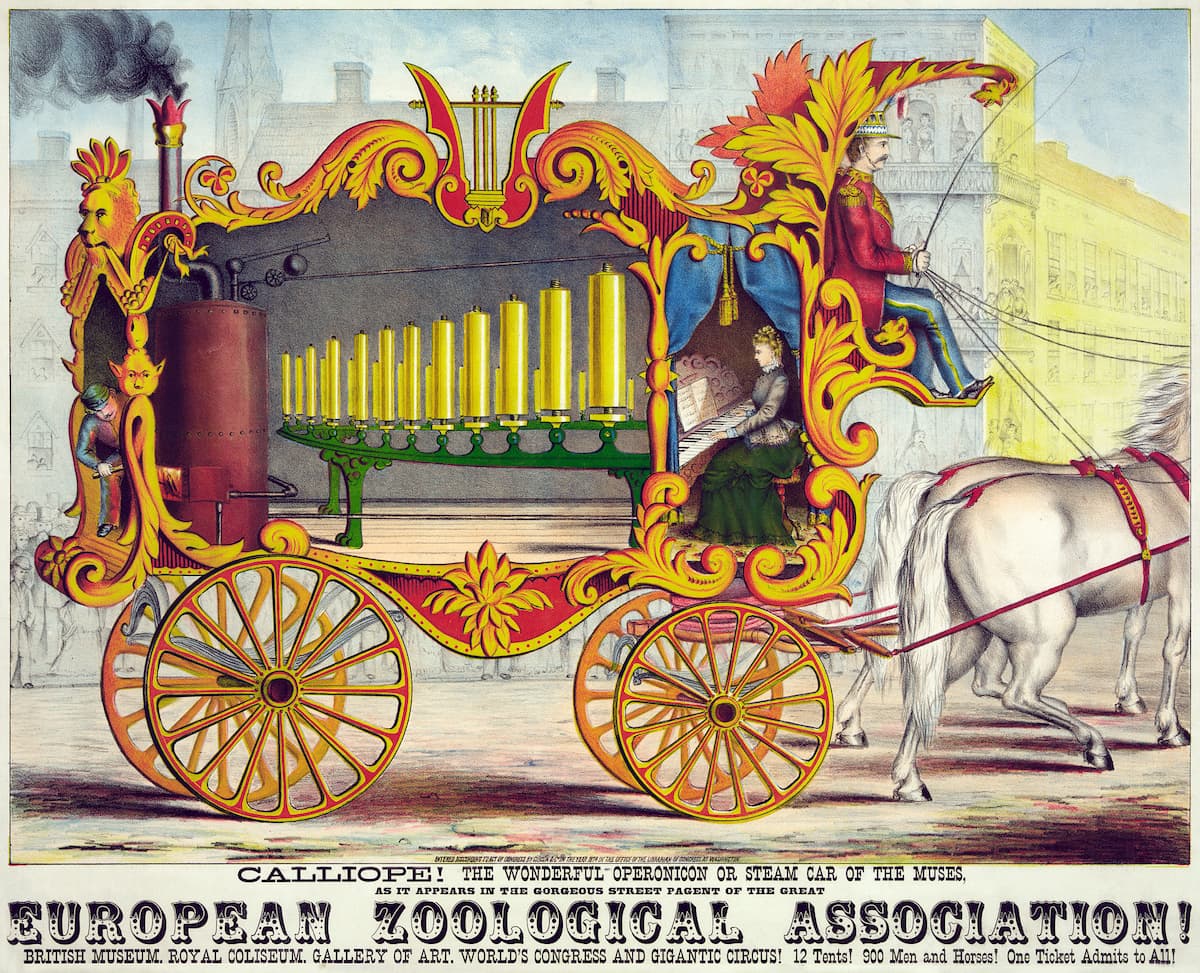
Calliope! The wonderful Operonicon or Steam Car of the Muses, as it appears in the gorgeous street pagent of the Great European Zoological Association!, 1874
Karl King: Barnum and Bailey’s Favorite (calliope)
The text for Un autre monde was written by Taxile Delord, the editor of the journal Le Charivari, for which Grandville also did illustrations. The whole construction of Un autre monde was a satire on the France of their day and we can see that reflection in the music choices: 400 ophicleides? That’s a nice reference to the excesses of Berlioz, as shown in another Grandville illustration (note the upturned ophicleide bells behind Berlioz as conductor.
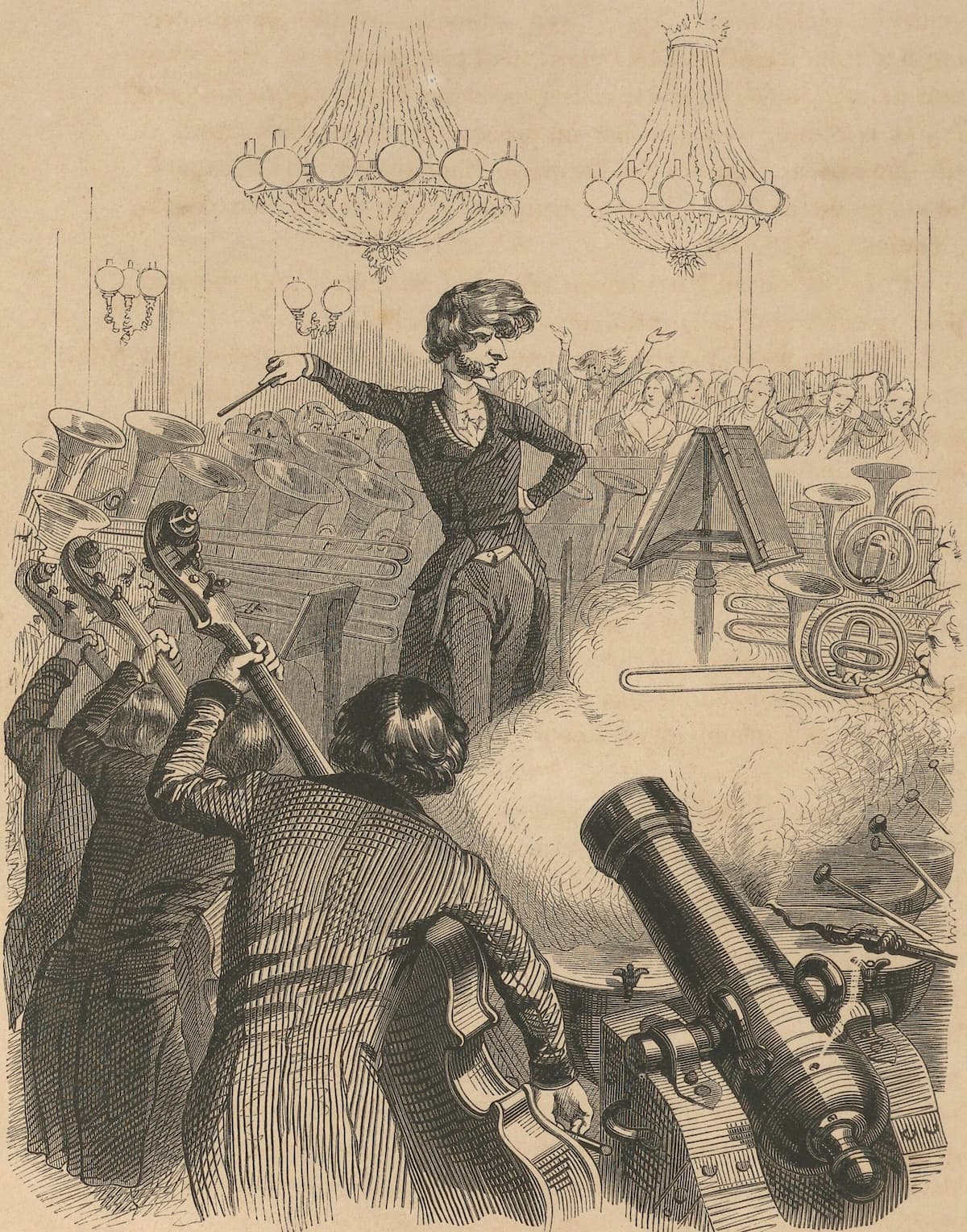
Grandville: The Hall is Solid, It Can Take the Strain!
For more of the best in classical music, sign up to our E-Newsletter

